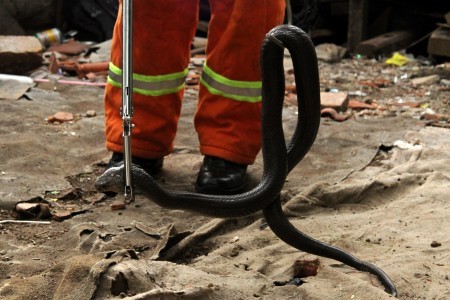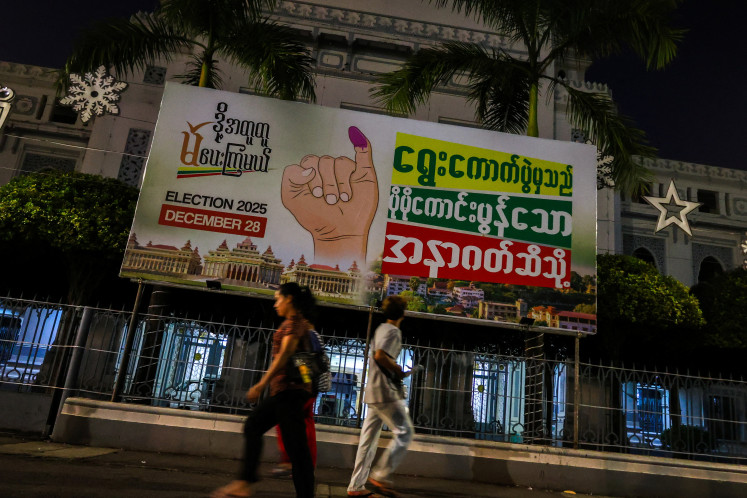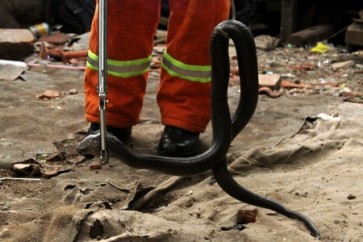Popular Reads
Top Results
Can't find what you're looking for?
View all search resultsPopular Reads
Top Results
Can't find what you're looking for?
View all search resultsSnake fright? How about fried snake?
Snake restaurants however aren’t using up all the quota of snake consumption set by the Environment and Forestry Ministry. One possible reason for its low popularity is because Islam, the majority religion in Indonesia, forbids eating snake meat.
Change text size
Gift Premium Articles
to Anyone
W
hile Jakarta residents may have been caught up in a snake scare, Aat Sambas has been thinking in terms of his culinary business. The recent discovery of many snakes, particularly cobras, in residential areas in Greater Jakarta, means Aat has not had to worry about supply for his Tenda Dua Cobra, a tiny food stall serving snake-based dishes, including satay, soup or fried snake.
His restaurant in the Pasar Lama culinary area in Tangerang, Banten, is a make-shift tent with four tables. Next to one table, there is a metal cage where 25 Javan cobras are cooped up.
One recent Wednesday evening, there were 10 diners, including Euis Sutanti, her two children and two neighbors.
“It tastes just like chicken but the texture is more like catfish,” said Euis, who developed a taste for snake just a month ago.
“I heard it’s good for your skin,” she said, adding that her favorite dish is fried snake in galangal seasoning.
Most dishes in the restaurant use python and cost Rp 24,000 (US$ 1.70) per plate. Cobra sells for Rp 60,000 for its blood or bile, and is only slaughtered upon order.
In Aat’s stall, diners get to pick their own cobra.


















